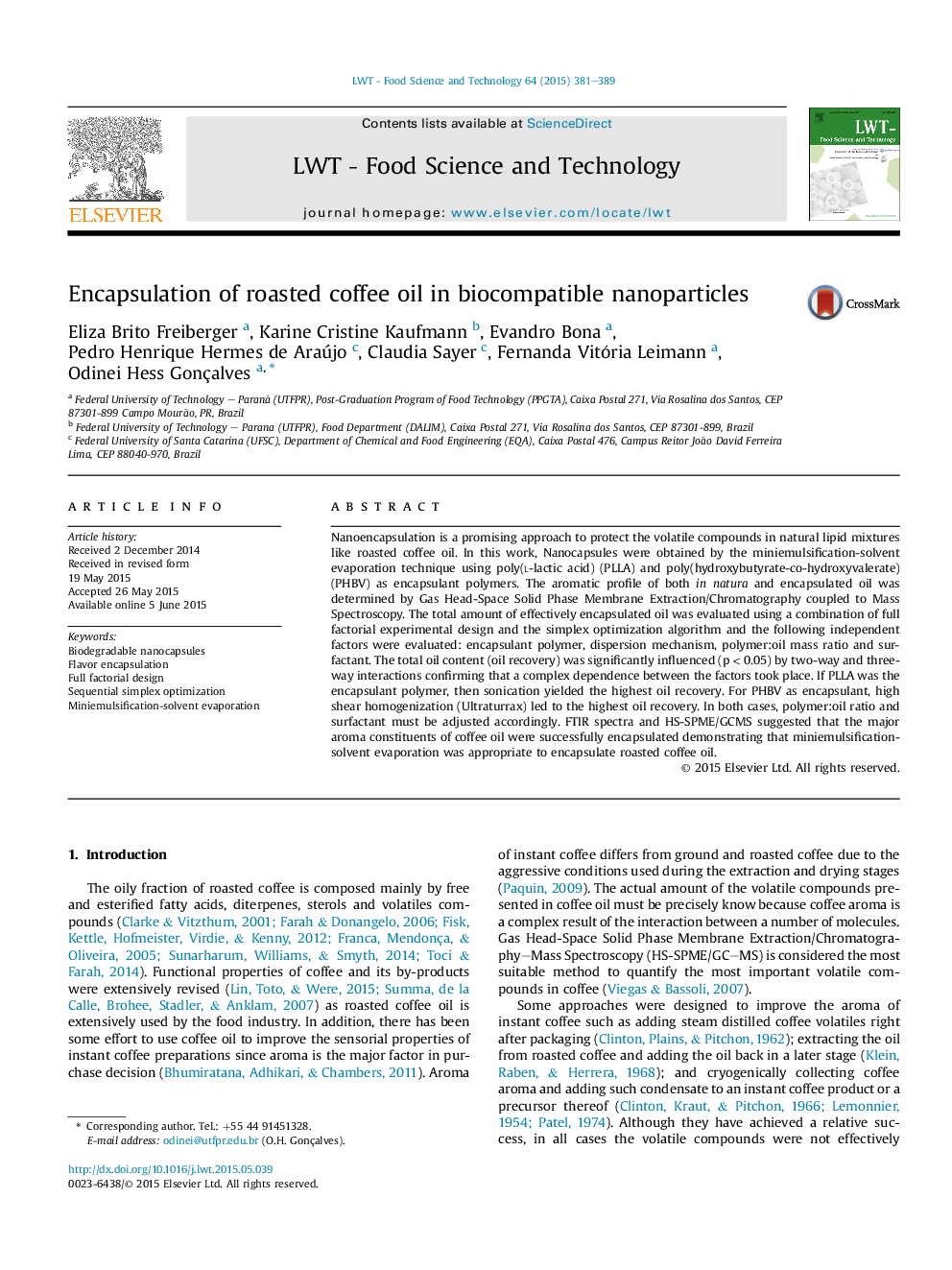| Article ID | Journal | Published Year | Pages | File Type |
|---|---|---|---|---|
| 6400804 | LWT - Food Science and Technology | 2015 | 9 Pages |
Abstract
Nanoencapsulation is a promising approach to protect the volatile compounds in natural lipid mixtures like roasted coffee oil. In this work, Nanocapsules were obtained by the miniemulsification-solvent evaporation technique using poly(l-lactic acid) (PLLA) and poly(hydroxybutyrate-co-hydroxyvalerate) (PHBV) as encapsulant polymers. The aromatic profile of both in natura and encapsulated oil was determined by Gas Head-Space Solid Phase Membrane Extraction/Chromatography coupled to Mass Spectroscopy. The total amount of effectively encapsulated oil was evaluated using a combination of full factorial experimental design and the simplex optimization algorithm and the following independent factors were evaluated: encapsulant polymer, dispersion mechanism, polymer:oil mass ratio and surfactant. The total oil content (oil recovery) was significantly influenced (p < 0.05) by two-way and three-way interactions confirming that a complex dependence between the factors took place. If PLLA was the encapsulant polymer, then sonication yielded the highest oil recovery. For PHBV as encapsulant, high shear homogenization (Ultraturrax) led to the highest oil recovery. In both cases, polymer:oil ratio and surfactant must be adjusted accordingly. FTIR spectra and HS-SPME/GCMS suggested that the major aroma constituents of coffee oil were successfully encapsulated demonstrating that miniemulsification-solvent evaporation was appropriate to encapsulate roasted coffee oil.
Related Topics
Life Sciences
Agricultural and Biological Sciences
Food Science
Authors
Eliza Brito Freiberger, Karine Cristine Kaufmann, Evandro Bona, Pedro Henrique Hermes de Araújo, Claudia Sayer, Fernanda Vitória Leimann, Odinei Hess Gonçalves,
